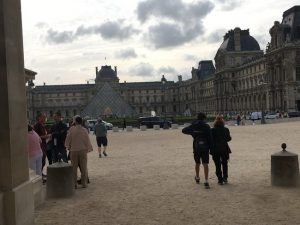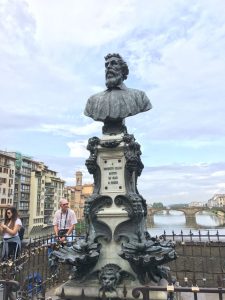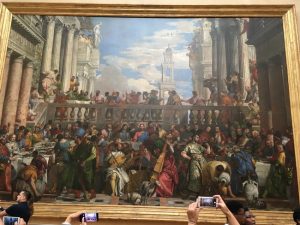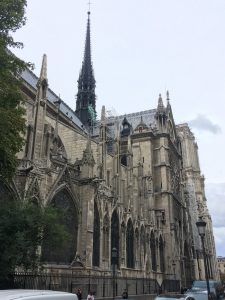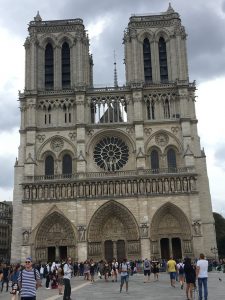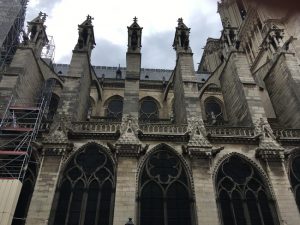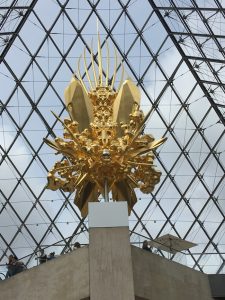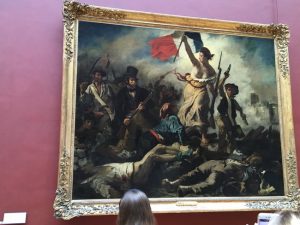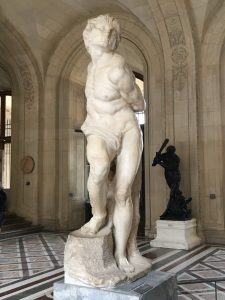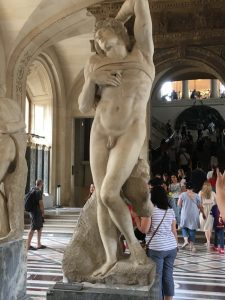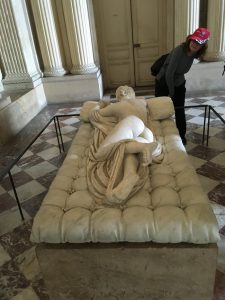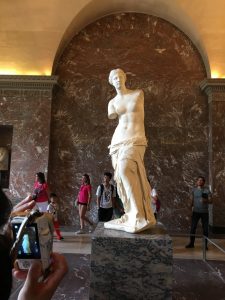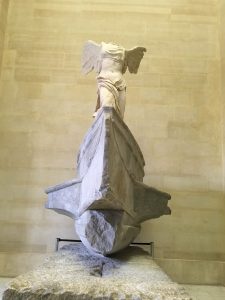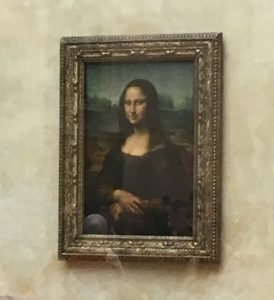Tag Archive
activity architecture art artist building Canada children city CostSaver downtown drive i-95 entertainment Europe event exhibit family festival Florida food fun historic History landmark local Museum music Nature New Zealand Ontario roadtrip sculpture Seattle show sights sightseeing tour tourist Trafalgar travel travelblogger view Washington Washington State water world
Italy, Florence: Ponte Vecchio Fountain
It makes sense that a bust/fountain on the Ponte Vecchio would be of a sculptor and goldsmith, Benvenuto Cellini. Cellini did not have any connection with the jewelry shops on the bridge, which are there today because when he was alive, butcher shops lined the bridge. The artist, in a shout out to Cellini, used motifs taken from the pedestal of Perseus, Cellini’s masterpiece. The inscription on the monument states: “To Benvenuto Cellini Master The Goldsmiths of Florence.”
France, Paris: Crowning of Napoleon
.
In the Louvre, one of the largest paintings at 33 ft. x 22 ft. was unsurprisingly commissioned by Napoleon himself of his 1804 coronation. His official court painter Jacques-Louis David, created a Facebook of French politicians, Napoleon’s family and, of course a selfie of the painter himself.
France, Paris: Notre-Dame Cathedral
.
Notre-Dame Cathedral is a architectural masterpiece and you really need to walk around the outside of it to appreciate it all. It was begun in 1160 and completed by 1260. Just think about how long ago that was and here it still stands so magnificently; What are we building today that will last that long? This medieval Catholic cathedral on the Île de la Cité in Paris is still widely considered to be one of the finest examples of French Gothic architecture with its innovative use of the rib vault and flying buttress, the gargoyles and the enormous and colorful rose windows.
France, Paris: The Throne in the Palace of the Louvre
.
France is celebrating 160th anniversary of diplomatic ties between France and Japan. Japonismes 2018: Les Ames en Resonance, will run through February 2019 involving exhibitions and events promoting Japanese art and design. Visual artist Kohei Nawa’s monumental sculpture “Throne” has one of the most prestigious spots in Paris: the Louvre. “I see the location as a connecting portal of modern lifestyles and the past, says Nawa, the Kyoto-based artist whose 10.4-meter-tall work is installed under I.M. Pei’s 1989 glass pyramid in the Louvre’s main courtyard.
The making of the throne itself involved both the past and the present. It was designed using state-of-the-art 3D modeling software and carved by robotic arms, however its gleaming gold leaf exterior was hand-applied by Japanese traditional craftspeople.
“The maximum capacity the pyramid can hold is 3 tons, so I told the museum I would ship a sculpture weighing exactly 3 tons,” says Nawa about the work’s creation. “I think they were bit worried, but after it went up, the Louvre’s curator, Martin Kiefer, told me the sculpture looks like it’s been at the pyramid all along.”
It’s not Nawa’s first “Throne” and it is different in that in previous iterations there was usually a small child seated within Nawa’s unique abstract shapes and geometric forms. For the Louvre, the seat is strikingly empty.
“Thrones are for kings. Here, the seat is for the authority that will eventually take over the control in the future. I left the seat empty to emphasize the invisibility,” says Nawa.
It sounds ominous, but Nawa goes on to explain that he foresees the type of power we see controlling today’s politics, economy and lifestyles as disappearing in the future, and in its place will be a very different form of authority. It could be artificial intelligence and advanced computer technology that will “take the throne,” he suggests, while we blindly follow, something that history has shown us that humans have had the tendency to do.
To us it is interesting that he chose a throne to be placed in this, the Palace of the Louvre, where French Kings sat on their thrones. Francis I chose this edifice as the residence for French kings and where it remained thus until good old King Louis XIV decided to move to Versailles and this building was then used to store his pretty things.
France, Paris: Liberty Leading the People in the Louvre
.
Though foreigners flock to see the Mona Lisa, to the French, the most important painting in the Louvre – the unofficial national painting of France is this one, Liberty Leading the People by Delacroix. The bare-breasted female figure, who is called Marianne became a symbol of Liberty for the French Republic. Though Delacroix painted the July Revolution of 1830, the broken bodies beneath the flag depict the 40 years of civil war, political and social upheavals necessary to conquer the monarchy in order to win a representative government. The huge 8′ by 10′ scale adds to the dramatic patriotism.
France, Paris: The Unnerving Raft of the Medusa at the Louvre
.
If you think life is tough, think of all the sailors that went out into the unknown seas. The shipwrecked Madusa, was left with 115 out of the original 400 sailors on board. There was very little food and water but lots of wine which led to heavy drinking, murder, mutiny and cannibalism. When rescued, only 15 were left alive. This work by Theodore Gericault’s was a seismic shift in art from the stiff neo-classicism of the past to the dramatic and emotional Romanticism in art. It is more of the most macabre painting in the Louvre.
France, Paris: Michelangelo’s Slaves
.
With everyone crowding in to see the Mona Lisa, you can head elsewhere in the Louvre Museum to find 100’s of other famous artists’ works, starting with Michelangelo. He was so brilliant at coaxing human emotions out of the stone. Here are two representations of slaves so painfully showing their despair.
France, Paris: Sleeping Hermaphroditus
.
At first glance this looks like a naked woman sleeping on a very soft cushioned bed but you would be mistaken on both counts. Originally found in the Borgehese gallery in Rome, obviously ancient audiences were comfortable with mixed gender concepts. She might be a he, and Bernini the master sculptor has made marble appear so soft.
France, Paris: Venus, Samothrace, and Mona
.
Three of the most recognized pieces of art in the world. The Venus de Milo (found on the Greek island of Milo) is over 200o yrs old and is still seen as the epitomy of classical female beauty. The Winged Victory of Samothrace is a mastery of carving – just notice the wind ruffling her 2200-year- old dress. And dear old Mona, our guide said she has that secret smile because she knows where Rodin hid The Thinker’s clothing! (See him at the Rodin Museum here in Paris)
France, Paris: Louvre Palace
.
You might not have known that the world’s largest art museum, the Louvre was a palace. Before that it was originally built in the late 12th to 13th century as the Louvre castle under Philip II. Francis I chose it as the residence for French kings where it remained until good old King Louis XIV decided to move to Versailles and this building was then used to store his pretty things.